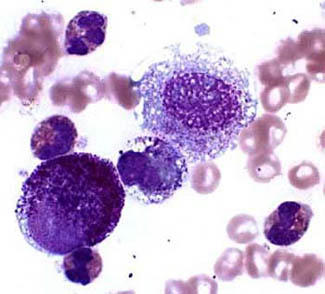There are many advantages to having your dog desexed.
Desexing prevents the conception of puppies and eliminates the sexual urge.
We remove the ovaries and uterus in the female and the testes in males. Dogs and bitches are usually desexed at 6 months of age although some are done earlier.
 The hormone testosterone takes about a month to decline after castration. Once it is out of the system desexed male dogs are less likely to wander and have no interest in bitches on heat. Because they escape or wander less they are less likely to get run over, get involved in fights or lift their legs on every post.
The hormone testosterone takes about a month to decline after castration. Once it is out of the system desexed male dogs are less likely to wander and have no interest in bitches on heat. Because they escape or wander less they are less likely to get run over, get involved in fights or lift their legs on every post.
A testis that has not descended into the scrotum has a higher risk of developing a cancer and should be removed as early as possible.
Heat periods or seasons in bitches occur about twice a year and last 3 weeks each time.
Bitches on heat often surprise their owners with their determined attempts to escape and find a mate.
Desexed bitches do not come on heat and cannot conceive puppies.
Desexing also prevents pyometron, an overwhelming infection of the uterus that makes older bitches very ill. Removal of the uterus is the best treatment for pyometron but general anaesthesia for the surgery is a big risk in an old, already sick bitch.
Desexing reduces the risk of breast cancer.
The desexing of females is least complicated when they are not on heat, pregnant or overweight. We recommend desexing bitches at 6 months of age before they come on heat and while the uterus is still immature.
Desexing is done under general anaesthesia. Dogs must be in good health and fasted for twelve hours prior to surgery. General anaesthesia always carries a slight risk but with modern anaesthetic agents, this risk is minimal. A vet examines all dogs on admission to hospital and before sedation. Discuss any worries with the vet and let us know if your dog is not in peak health.
We do the surgery during the morning and keep your dog in hospital under observation for the afternoon. A discharge time is arranged on admission. A vet or veterinary nurse will discuss aftercare with you at discharge.
Once desexed and over the surgery a dog’s metabolism slows down. Cut the total amount of food fed per day by 30% and make sure you continue with normal exercise routines.




 We have seen an upsurge in dogs with sun induced skin cancers in the last month or so. Most of these are on the bellies of Staffies or Jack Russells that love to lie on their backs in the sun.These cancers can be difficult to remove completely if they are not caught early and will recur if the sunbaking continues.
We have seen an upsurge in dogs with sun induced skin cancers in the last month or so. Most of these are on the bellies of Staffies or Jack Russells that love to lie on their backs in the sun.These cancers can be difficult to remove completely if they are not caught early and will recur if the sunbaking continues. Mast Cell Tumours are aggressive skin cancers and common in dogs. They can look like anything: a patch of dry skin, a raised red itchy area, a wart or a lump.
Mast Cell Tumours are aggressive skin cancers and common in dogs. They can look like anything: a patch of dry skin, a raised red itchy area, a wart or a lump.